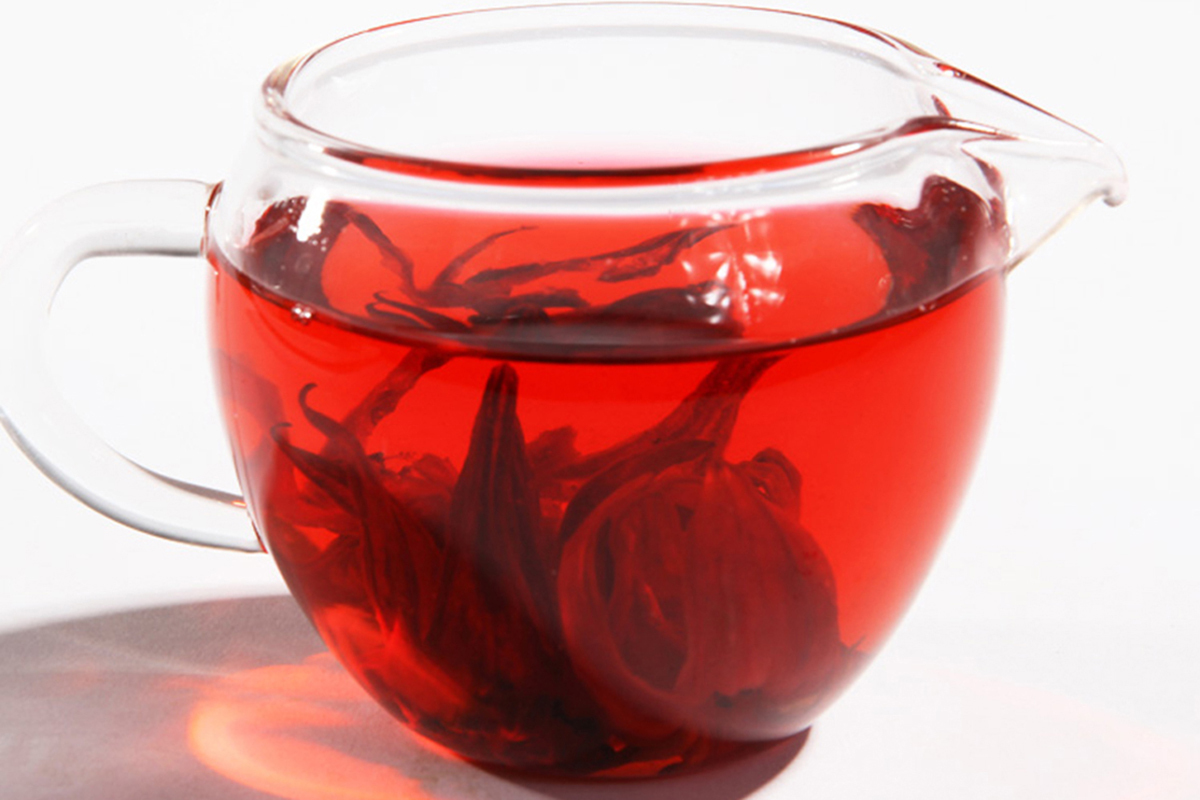Hibiscus: features and useful properties
This drink, loved by many, is distinguished by its beautiful ruby or burgundy color, slight astringency, and pleasant sweet and sour taste. Hibiscus, called “red tea” and “the drink of the pharaohs,” is made from dried bracts of rosella (Latin name – Hibiscus sabdariffa). This plant, which originated in India and grows in tropical and subtropical regions, is called by different names – “Sudanese rose,” “kenaf,” “okra,” “Venetian mallow,” “hamaika,” etc. In Russia, rosella is grown in Crimea.
Hibiscus tea is famous not only for its history, but also for its beneficial properties; in ancient times, it was considered a drink for the elite. And the appearance of this flower deserves words of praise; it is as beautiful as it is life-giving. This plant can be either an annual herbaceous plant or a perennial shrub. There are about 150 species of hibiscus. It is grown in countries such as India, Ceylon, and Sri Lanka. The flowers of this plant can also be used to make jelly or jam. In the Arab world, hibiscus was considered a cure for all diseases, and it received many beautiful nicknames there.
What is hibiscus anyway? Hibiscus is a shrub from the mallow family. Everything about hibiscus is useful: roots, leaves, stems, but its flowers are used to make tea. The existence of the petal is short-lived. The flower, blooming in the morning, falls off at 12 o'clock in the afternoon. After that, only the sepal remains, which is reincarnated every day and eventually turns into a juicy fruit. The main thing in this matter is not to let it overripe, the fruit is picked by hand and dried in the conditions required for it. Such tea is endowed with a large number of biologically active substances. They are largely organic acids.
The power of hibiscus
Organic acids give tea its pleasant taste. The high content of anthocyanins in tea is reflected in its bright ruby color. Quercetin is a powerful antioxidant that stops the wear of skin cells, myocardium, and cornea. The content of flavonoids, substances with P-vitamin activity, reduces the risk of diabetes, slows down aging, strengthens the walls of blood vessels, and makes them elastic. Linoleic acid helps overcome fatigue, stress, and helps our minds think better. Thus, pectin contained in tea is a kind of "vacuum cleaner", cleaning excess from the body.
Who is hibiscus good for?
This drink will fill the body with health at a temperature, fatigue, overwork, helps with reduced immunity. An important quality of tea is the hypotensive effect. It is recommended for people suffering from diabetes, hypertensive patients to lower blood pressure. For people who spend a lot of time in front of the monitor, hibiscus helps to preserve vision. The drink has a laxative effect and helps with constipation. With repeated use of tea, the complexion of the face can improve, dryness of the face disappears, reduces acne. And if yesterday was a stormy night and there is no brine at hand, then you do not need to be upset, hibiscus will cure your headache better than any brine. It is also possible to get rid of excess weight, but with such a diet you need to be extremely careful no more than 3 glasses a day plus other food products.
Potential harm of the drink
People suffering from gastritis or ulcers should not drink this tea, as it increases the acidity of gastric juice. And with low blood pressure, you should also refuse to drink it, and of course, if you are allergic to this product.
Choosing Hibiscus
When buying tea, you should pay attention to the size of the tea leaves, large ones are best, not the crushed ones that are usually found in tea bags. The shelf life of tea is several years.
In Russia, we brew hibiscus like regular tea: pour boiling water over it, let the drink steep, and pour it into a mug. In Egypt, the homeland of this drink, they boil it. If you want to follow all the rules, you should brew the tea in ceramic or glassware. Metalware distorts the color and taste of the drink.
Interesting facts about hibiscus tea
In Burma, the plant's seeds are considered an aphrodisiac, and in Angola, the juice of this multifunctional plant is used to heal wounds; in India, puddings are even prepared with it. Senegal supplies Europe with hibiscus in the form of pressed balls weighing up to 80 kg for the food industry and pharmaceutical companies.
The rest of the petals, having given up all their taste and usefulness, are sent to fertilize the gardens. If we take into account the statistics, then every third family from Scandinavia constantly buys hibiscus tea, it is not very popular here yet.
How else can you use hibiscus?
Hibiscus can be a good base for mulled wine. When cooking, it is better to use those spices that are familiar and pleasant to you. If desired, you can add fruits. So, here it is - the recipe: pour spices with water and boil over low heat until the kitchen is filled with wonderful aromas, then cool it all and mix with a drink from hibiscus - and here is a delicious mulled wine ready.
As you have already understood, this is an amazing drink with a wonderful history that can be envied by prominent figures of the past, it is a kind of “living water” from Russian fairy tales, so let’s take care of our health, and let the “drink of the pharaohs” help us all with this.
- Comments
- Vkontakte









